Aircraft
Junkers Ju 87 G-2 “Stuka” Dive Bomber
Pilot & Markings
Oberst Hans-Ulrich Rudel — Stab/SG2, Eastern Front, Autumn 1944
Scale & Kit
1/32 Hasegawa Scale Model
History
The German Ju 87 Sturzkampfflugzeug (dive bomber) is perhaps, the most famous ground-attack aircraft of World War II. Nicknamed the “Stuka”, this two seat aircraft made its combat debut in 1936 during the Spanish Civil War.
Noted for its inverted gull wings and fixed undercarriage, Stuka bombers were often fitted with a wailing siren that would terrorize enemy troops during attacks. The siren, known as the Jericho Trumpet, became an infamous propaganda symbol of Nazi air power. Another notable feature was the addition of automatic pull-up dive brakes on each wing. Due to high acceleration, pilots were known to suffer loss of vision or even blackouts during a dive. These brakes ensured that the aircraft recovered from its dive even if the pilot lost consciousness. Like many other dive bombers of the time, the Ju 87’s slow speed and poor manoeuvrability made it susceptible to fighter aircraft. Eventually, the Stuka became too vulnerable to growing opposition and the Luftwaffe was forced to replace it with the Fw 190 F. An estimated 6,500 Ju 87’s were built by the time production ended in August of 1944.
The Ju 87 “G” type, represented in this scale model aircraft, was the final operational version of the Stuka. This aircraft was designed for combat missions on the Eastern Front against well armoured Soviet tanks. It featured massive 37mm cannons mounted in gun pods under each wing and loaded with a 6-round magazine of armour piercing ammunition. The design also enabled it to carry a 1,000 kg bomb load. A low stall speed, stability and large wings made the Stuka very effective against slow moving ground targets.
Stuka pilot Hans-Ulrich Rudel was the most highly decorated serviceman in Germany. During his career, he flew a world record 2,530 combat missions and recorded victories against almost 2,000 targets. This tally includes 519 tanks, 70 assault boats, 150 self-propelled guns, 4 armoured trains and 800 other vehicles. He also sank a battleship, two cruisers, a destroyer and recorded victories against 9 aircraft. An interesting report explains how Rudel once landed his aircraft to rescue novice Stuka crewmen. Not being able to take off, the men were chased for 6 km by Soviet soldiers. Their escape included a 600 meter swim across icy water, only to be captured by other Soviets before reaching German lines. Rudel then made another escape and despite being barefoot, wet, wounded and hunted, he managed to jog his way back to German lines over frozen land. Eventually a 100,000 Ruble bounty was placed on his head by Stalin himself. At the end of the war, Rudel was still determined not to fall into Soviet hands. He led three Ju 87 and four Fw 190 aircraft westward in a 2-hour flight and surrendered to U. S. forces on May 8, 1945.
Hasegawa’s excellent 1/32 scale model aircraft was used to replicate the Ju 87 G-2 Stuka dive bomber (W.Nr. 494193) flown by Hans-Ulrich Rudel. The model displays how Rudel’s aircraft would have looked when returning from a mission around autumn of 1944. Eduard’s photo-etch cockpit was also included to enhance the interior. Enjoy the photos.






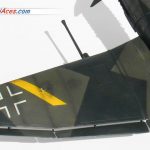

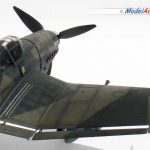






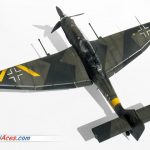






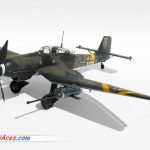
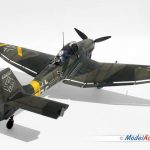



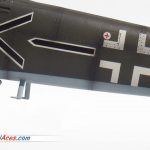


Leave a Reply